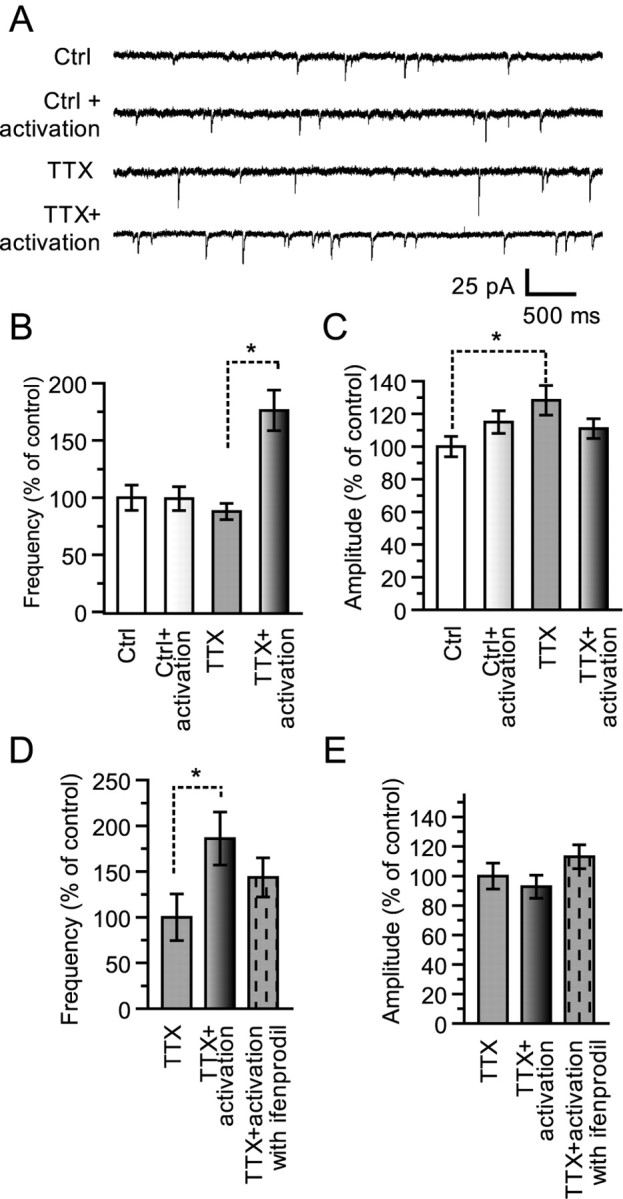Figure 8.

Rapid increase of AMPAR-mEPSCs by circuit reactivation in TTX-treated neurons. A, Representative traces of AMPAR-mEPSCs in each condition. Ctrl, Control neurons; TTX, TTX-treated neurons. B, Analysis of AMPAR-mEPSC frequency in control and TTX-treated neurons with or without circuit activation. Circuits were activated by washing out TTX and incubating neurons in extracellular solution with PTX (100 μm) for 30 min. Although TTX treatment did not increase the AMPAR-mEPSC frequency, circuit reactivation rapidly caused an increase in the frequency (Ctrl, 100.0 ± 11.0%, n = 27; Ctrl + activation, 99.2 ± 10.4%, n = 29; TTX, 87.9 ± 7.0%, n = 25; TTX + activation, 176.4 ± 17.8%, n = 33; *p < 0.05). C, Plot of the effects of circuit reactivation on the amplitude of AMPAR-mEPSCs. A significant increase in the amplitude is observed for TTX-treated neurons (Ctrl, 100.0 ± 6.2%, n = 27; Ctrl + activation, 115.0 ± 6.9%, n = 29; TTX, 128.4 ± 9.1%, n = 25; TTX + activation, 111.0 ± 6.1%, n = 33; *p < 0.05). D, E, Effect of ifenprodil on the AMPAR-mEPSC increase induced by circuit activation. The NR2B-NMDAR antagonist ifenprodil (4 μm) was included during circuit reactivation. Ifenprodil prevented the increase in AMPAR-mEPSC frequency (TTX, 100.0 ± 25.5%, n = 9; TTX + activation, 186.1 ± 28.9%, n = 10; TTX + activation with ifenprodil, 143.6 ± 21.4%, n = 16).
